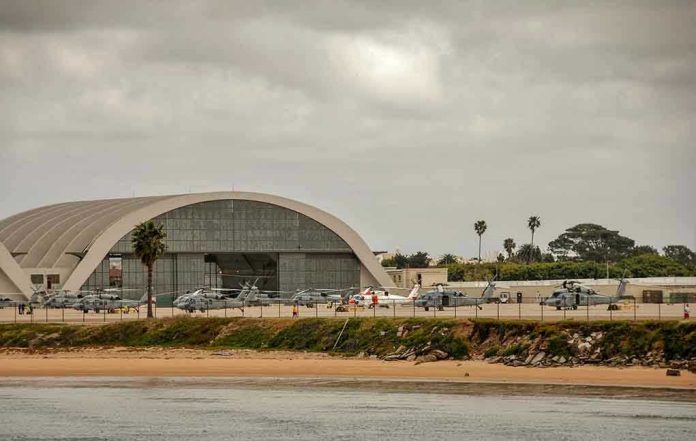
A city run by leftists just unveiled a 3,000-home mega-development on top of a swampy, abandoned airport in Queens—raising the question: who exactly benefits from New York’s latest “affordable housing” experiment, and who gets left holding the bag?
At a Glance
- Mayor Eric Adams is pushing to build 3,000 new homes on the long-abandoned Flushing Airport site in College Point, Queens.
- The site is a marshy brownfield, closed since 1984 due to flooding and safety concerns, now facing major environmental and infrastructure hurdles.
- Critics argue the plan ignores local input, threatens wetlands, and could strain already stressed city services.
- Supporters claim the project is sorely needed amid a chronic housing shortage, but the plan’s real costs and beneficiaries remain murky.
Mayor Adams Touts “Housing Week” with Mega-Development on Swampy Ground
Mayor Eric Adams kicked off what his administration calls “housing week” by announcing a plan to drop 3,000 new homes—many labeled as “affordable”—on the long-forgotten and flood-prone Flushing Airport site in College Point, Queens. The city claims this will help solve New York’s housing crunch, but the reality looks more like another classic case of government overreach, where grand schemes are hatched on the backs of taxpayers, while the risks get swept under the rug. This marshy, mosquito-ridden plot has been sitting idle since a fatal crash and chronic flooding forced its closure in 1984, but now, it’s being repackaged as “the future of urban revitalization.”
Abandoned NYC airport will land 3,000 new homes, Mayor Eric Adams announces in ‘housing week’ kickoff https://t.co/LFhgqmJjs8 pic.twitter.com/NGxAA67s4p
— New York Post (@nypost) July 28, 2025
The city’s pitch is straightforward: take an unused, environmentally sensitive brownfield, throw billions of taxpayer dollars at it, and call it a win for affordable housing. But if history tells us anything, these centrally planned “solutions” rarely live up to the hype—especially when the environmental, infrastructure, and community impacts get buried beneath mountains of bureaucratic paperwork and political grandstanding. For decades, every attempt to redevelop this site has crashed on the rocks of reality. But this time, the politicians insist, “it’s different.”
Decades of Failure and Floods: The Real Story Behind Flushing Airport
Flushing Airport opened in 1929 on 250 acres of wetlands and quickly became one of the city’s busiest private airfields—until LaGuardia Airport all but rendered it obsolete by the 1950s. After a fatal crash in 1977 and decades of persistent flooding and mosquito infestations, the airport was finally shuttered in 1984. Since then, the site has reverted to marshland, requiring constant mosquito control due to West Nile virus threats. Every proposal to revive it—for industry, commerce, or recreation—has drowned under the weight of environmental hazards and logistical nightmares.
The site’s location near Flushing Bay, the Flushing River, and major highways makes it prime real estate on paper, but the reality is a tangle of brownfield contamination, flood risk, and regulatory headaches. Previous redevelopment efforts have failed spectacularly, stymied by local opposition and the sheer cost of remediating a perpetual wetland. Yet, City Hall is plowing ahead, waving away environmental and infrastructure realities as mere “details” to be sorted out later.
Who Wins, Who Loses: Stakeholders and Skeptics Speak Out
The usual lineup of city officials, developers, and politically connected contractors stand to reap serious rewards if the plan moves forward. The New York City Economic Development Corporation will oversee project planning, with hand-picked developers waiting in the wings. But the people who actually live in College Point? They’re raising alarms about traffic, flooding, strained infrastructure, and the loss of dwindling green space. Environmental groups warn that paving over wetlands could worsen storm flooding and destroy fragile habitats, while the city’s promises of “extensive environmental review” sound suspiciously like hollow talking points designed to deflect scrutiny.
Local residents, many of whom have watched failed plans come and go for decades, see another boondoggle that could saddle taxpayers with enormous costs while delivering little relief to those actually struggling to afford a home. Meanwhile, the prospect of thousands of new residents threatens to overwhelm schools, roads, and utilities in a community already stretched thin. History suggests that the real winners will be the developers and bureaucrats, while taxpayers and longtime locals foot the bill for yet another top-down “solution” to a crisis the city’s own policies helped create.
Promises, Pitfalls, and the Politics of “Affordable Housing”
Mayor Adams and his allies insist the plan is a bold answer to New York’s housing shortage, with construction supposedly just a few years away. The reality is a maze of environmental reviews, public hearings, and rezoning battles that could drag on for the better part of a decade. Experts warn that building on a wetland will require expensive remediation and flood-proofing—costs that always seem to balloon once the shovels hit the dirt, leaving taxpayers paying for years.
Proponents say the project will create jobs, boost property values, and revitalize College Point. But critics see another example of politicians using “affordable housing” as a Trojan horse to push through giant, risky development projects that serve special interests and saddle communities with long-term problems. With inflation still biting and taxpayers already bled dry by endless government spending, many are demanding real accountability—not another round of empty promises and wishful thinking from City Hall. When all is said and done, will this scheme deliver what’s promised, or will it go down as yet another spectacular waste of public trust and resources?
Sources:
NYCAviation: Remembering Flushing Airport
Metro Airport News: Flushing Airport
Abandoned & Little-Known Airfields: Queens







